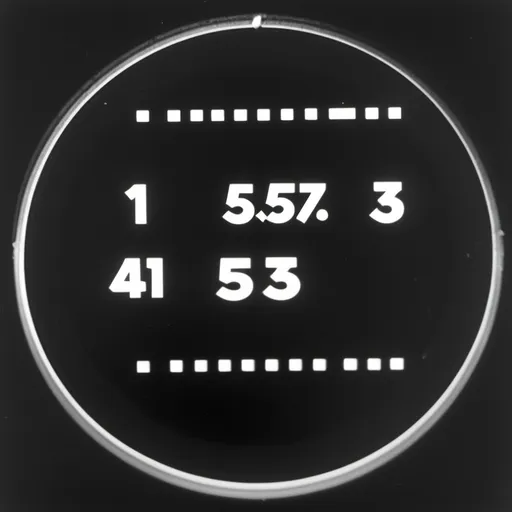In the world of film photography, every detail matters. From the type of film used to the way it’s developed, photographers have long relied on subtle clues to ensure their images turn out perfectly. One such clue is the A1577 code on 35mm negative. This seemingly cryptic code holds significant importance for both amateur and professional photographers. In this article, we’ll explore what the A1577 code means, its role in film photography, and why it’s essential to understand its implications.
What is the A1577 Code on 35mm Negative?
The A1577 code on 35mm negative is a unique identifier embedded into the film strip by manufacturers. It’s part of a system designed to provide critical information about the film, such as its type, batch number, and manufacturing details. This code is typically found along the edges of the film strip, often near the sprocket holes.
The Purpose of the A1577 Code
The primary purpose of the A1577 code on 35mm negative is to help photographers and lab technicians identify the film’s characteristics. This is particularly useful during the development process, as different films require specific chemical treatments. By referencing the A1577 code, labs can ensure that the film is processed correctly, minimizing the risk of errors.
Decoding the A1577 Code: What Does It Mean?

The A1577 code on 35mm negative is not just a random sequence of numbers and letters. Each part of the code carries specific information:
- A: This letter often indicates the film’s manufacturer or brand. For example, “A” might refer to a specific company like Kodak or Fujifilm.
- 1577: The numerical portion of the code typically represents the film’s batch number or production date. This helps trace the film back to its origin, which is useful for quality control and troubleshooting.
Why the A1577 Code Matters
Understanding the A1577 code on 35mm negative is crucial for several reasons:
- Consistency: By knowing the film’s batch number, photographers can ensure consistency in their work, especially when shooting multiple rolls.
- Troubleshooting: If an issue arises during development, the A1577 code can help identify whether the problem lies with the film itself or the processing method.
- Historical Value: For archivists and collectors, the A1577 code provides valuable information about the film’s age and origin.
How to Locate the A1577 Code on 35mm Negative
Finding the A1577 code on 35mm negative is relatively straightforward. Here’s how you can do it:
- Examine the Film Strip: Hold the developed film strip up to a light source and look along the edges, near the sprocket holes.
- Use a Magnifying Glass: The code is often small and faint, so a magnifying glass can help you read it clearly.
- Check the Film Canister: In some cases, the A1577 code may also be printed on the film canister or packaging.
The Role of the A1577 Code in Modern Film Photography
While digital photography has largely taken over, film photography remains a beloved medium for many. The A1577 code on 35mm negative continues to play a vital role in this niche community.
For Photographers
Photographers who shoot with film rely on the A1577 code to ensure their images are developed correctly. By understanding the code, they can make informed decisions about which films to use for specific projects.
For Labs
Film development labs use the A1577 code to streamline their processes. It allows them to quickly identify the type of film and apply the appropriate chemical treatments, ensuring consistent results.
For Collectors
Vintage film collectors often use the A1577 code to date and authenticate their collections. This is particularly important for rare or discontinued films.
Common Misconceptions About the A1577 Code
Despite its importance, the A1577 code on 35mm negative is often misunderstood. Here are some common misconceptions:
- It’s Just a Serial Number: While the A1577 code does include a serial number, it’s much more than that. It provides valuable information about the film’s origin and characteristics.
- All Films Have the Same Code: Different manufacturers use different coding systems, so the A1577 code may not appear on every film.
- It’s Only Relevant for Professionals: Even amateur photographers can benefit from understanding the A1577 code, especially if they develop their own film.
Tips for Working with the A1577 Code
If you’re a film photographer, here are some tips for making the most of the A1577 code on 35mm negative:
- Keep Records: Document the A1577 codes for each roll of film you use. This can help you track which films produce the best results.
- Communicate with Your Lab: If you’re sending your film to a lab, let them know about the A1577 code. This can help them process your film more accurately.
- Experiment: Use the A1577 code to explore different film types and batches. You might discover new favorites!
The Future of the A1577 Code in Film Photography
As film photography continues to evolve, the A1577 code on 35mm negative remains a timeless tool. While digital technology has introduced new ways to capture and process images, the A1577 code serves as a reminder of the artistry and precision that define film photography.
Will the A1577 Code Become Obsolete?
While some may argue that the A1577 code is a relic of the past, its relevance persists. As long as film photography exists, the A1577 code will continue to play a crucial role in ensuring quality and consistency.
Conclusion: The A1577 Code on 35mm Negative – A Small Detail with Big Impact
The A1577 code on 35mm negative may seem like a minor detail, but its significance cannot be overstated. From helping photographers achieve consistent results to aiding labs in the development process, this code is an essential part of film photography. Whether you’re a seasoned professional or a curious beginner, understanding the A1577 code can enhance your appreciation for this timeless medium.
So, the next time you’re holding a strip of 35mm film, take a moment to look for the A1577 code. It’s a small but powerful reminder of the craftsmanship and precision that go into every shot.












